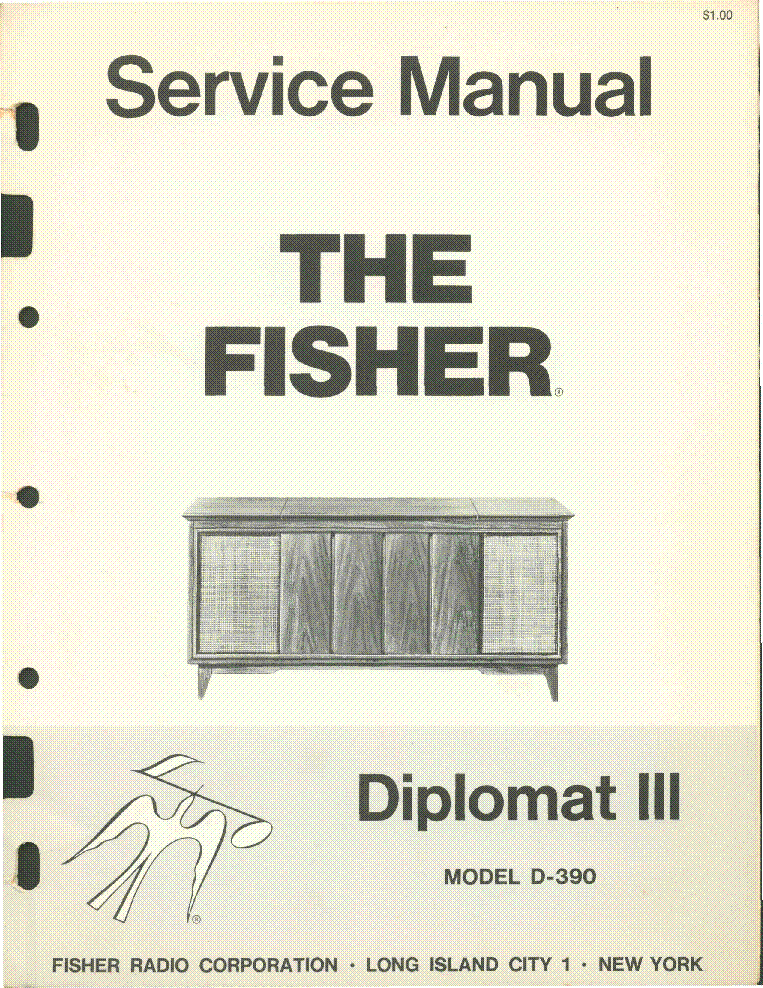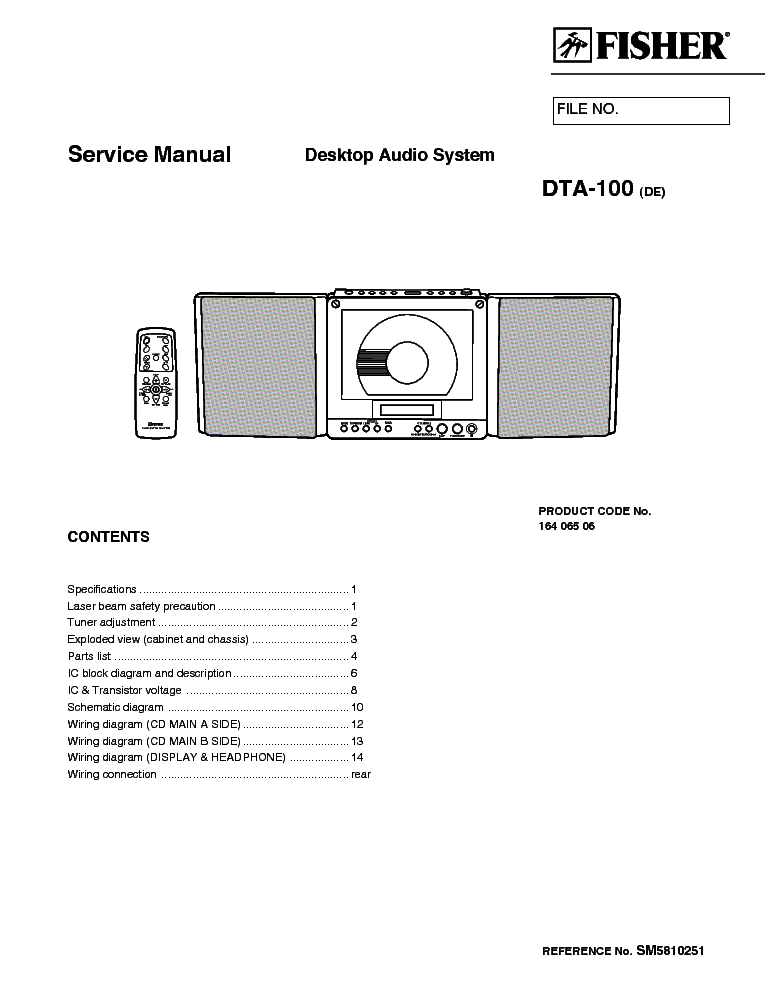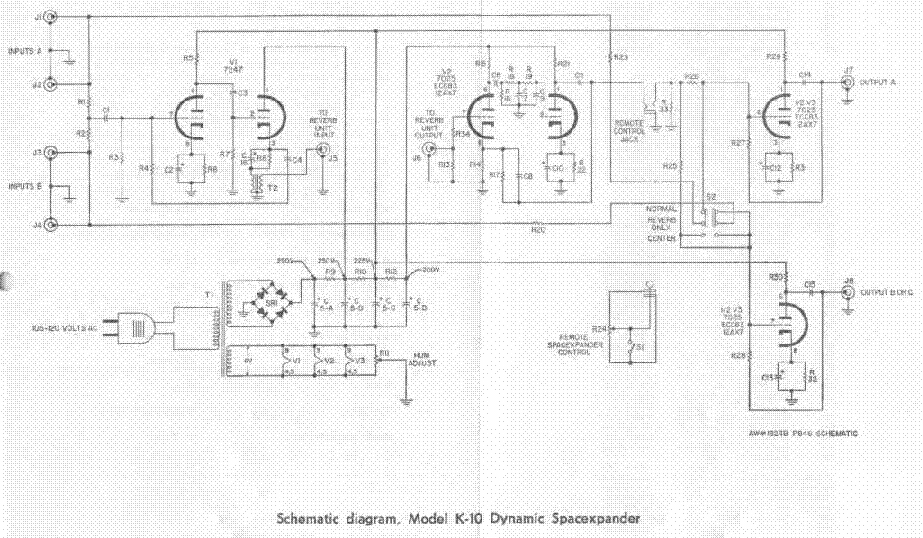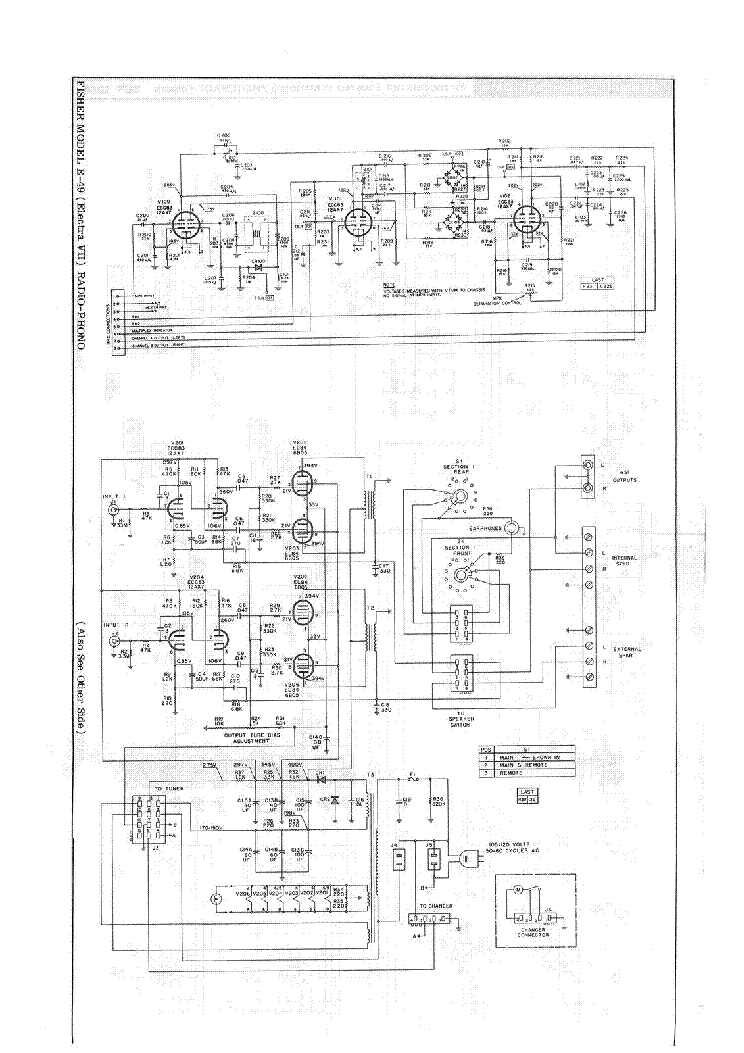Service manuals, schematics, eproms for electrical technicians
FISHER 500B RECEIVER

Type:  (RAR)
(RAR)
Size
421.4 KB
421.4 KB
Page
---
---
Category
AUDIO
SERVICE MANUAL
AUDIO
SERVICE MANUAL
If you get stuck in repairing a defective appliance download this repair information for help. See below.
Good luck to the repair!
Please do not offer the downloaded file for sell only use it for personal usage!
Looking for similar fisher manual?
Good luck to the repair!
Please do not offer the downloaded file for sell only use it for personal usage!
Looking for similar fisher manual?
Document preview [1st page]

No preview item for this file.
Possible causes:
- No preview picture generated yet.
- It is not a pdf file.
Advertisements
Download free of charge (10 files / day):

Download processing...

Download processing...
- Also known:
FISHER RECEIVER 500B 500
- If you have any question about repairing write your question to the Message board. For this no need registration.
- If the site has helped you and you also want to help others, please Upload a manual, circuit diagram or eeprom that is not yet available on the site.
Have a nice Day! - See related repair forum topics below. May be help you to repair.
Warning!
If you are not familiar with electronics, do not attempt to repair!
You could suffer a fatal electrical shock! Instead, contact your nearest service center!
Note! To open downloaded files you need acrobat reader or similar pdf reader program. In addition,
some files are archived,If you are not familiar with electronics, do not attempt to repair!
You could suffer a fatal electrical shock! Instead, contact your nearest service center!
so you need WinZip or WinRar to open that files. Also some files are djvu so you need djvu viewer to open them.
These free programs can be found on this page: needed progs
If you use opera you have to disable opera turbo function to download file!
If you cannot download this file, try it with CHROME or FIREFOX browser.
Translate this page:
Relevant AUDIO forum topics:
Sziasztok,
A fent nevezett erősítőben 2db stk0060 volt eredetileg.
1 db om volt és azzal az az egy oldal szépen működik.
A kérdésem az lenne hogy a másik oldalra stk0080 at rakok mely feszültségben ok de teljesítményben nagyobb okozok e vele problémát, hogy nem lesz teljesen szimmetrikus?
Sajnos mo on csak ezt lehet beszerezni.
Segítségeteket előre is köszönöm.
Üdv
Gy
Sziasztok. A cimben szereplo erositovel szenvedek (szo szerint), mar egy ideje. Eloeleterol nem sokat tudni, hozzam eletjel nelkul kerult. Kibontas utan: szakadt biztositekok a sec. oldalon, a vegtranzisztorok ahany - annyifele/fajta, csillamlemezzel ugyan, de szigetelogyuru nelkul. Mas hibat nem talaltam, es a szigetelogyuruk hianyaban normalisak a szakadt biztositekok. A biztositekok es szigetelogyuruk potlasa utan az erosito megszolalt es megnyugodtam, hogy a vezerlo ic-k (upc1270h) megmaradtak. De ezekkel a vegtranzisztorokkal nem maradhatott, ujdonsult tulaja egy vajtfulu zenesz, meg az en reszemrol is kontarmunka lett volna bd242/243 parosokat bennt hagyni. Inkabb valami japan tranzisztorokat probaltam felhajtani, nem sok sikerrel, to220 tokozasban nem talaltam parokat. Vegul a fiokban lapulo 2sa1941/2sc5198 parokat tettem bele, kicsit izmosak ide, de ugy gondoltam csak nem fog kohogni ettol az erosito. Es itt kezdodik ez en kalvariam. A s.m.-ban az emiterellenallasokon mert feszultsegesest 3mV-ra kell beallitani. 0.003V/2x0.22R = 0.0068A. 6.8mA. Hat ez nekem marhara kevesnek tunt, igy sikerult nagyjabol a duplajara beallitani. Egyik oldalon siman ment, masik oldalon eleg messze kellett tekernem a trimmert amig meglett a 6mV. Szolni szolt, csak a vezerlo ic-k nagyon hamar felforrosodtak, igy gyartottam rajuk egy-egy szep nagy extra hutest. A gyari hutozaszlok nagyjabol a fele az ic-k adatlapjaban megadottnak, nem is ertem hogyan mukodott ez az erosito gyarilag. A kovetkezo huzas az volt, hogy amig fulhallgatoval szepen szol, mihelyst rakotom a muterhelest, az egyik csatorna kezd torzitani. Idonkent helyrejon egy-egy kis idore, mintha kontakthiba lenne, de hiaba kocogtattam vegig a panelt, nem volt valtozas. A vegerosito panelt atforrasztottam, aztan ugyanez a 2 elulso panellal is, de a hiba maradt. Ha rakotom a muterhelest, egyik csatorna torzit, ha lekotom, a hang kitisztul. Legutoljara azon a csatornan, ahol nehezebb volt a nyugalmi aramot beallitani, vegtranzisztorokat csereltem es beallitottam a kivant 3mV-ot. Ennek ellenere nem tapasztalok kulobseget a 2 vezerlo ic homersekleteben, ugyanugy melegszik mindketto. Elore is koszonom, ha valakinek sikerulne felkapcsolnia az alagut vegen a fenyt. Udv.
Sziasztok!Fisher CA-225 erösítőnek kellene a kapcsolási rajza mert hiányosan kaptam.Előre is köszönöm,ha valaki tudna segíteni.
Sziasztok!
Került hozzám egy Fisher CA-275 HiFi erősítő, amely 2db STK-0100 Darlington végfokkal van szerelve. Ebből már csak az egyik él, a kimeneten, a rossz oldalon 14V egyenfesz jelenik meg. (Van benne védelem, ennek ellenére ennél a feszültségnél mégsem tilt le.) Műterhelést rákötve (8 Ohm), azon alapban igen nagy áram folyik, pontosan elég ahhoz, hogy a "mélynyomó" leégjen rövid idő alatt, (sajna, ez már meg is történt a tulajnál. A kapcsolási rajza is érdekelne, ha valakinek megvolna hozzá.)
- Kérdésem az lenne, ilyen végfok már kifutott, nem rendelhető, lehet-e helyettesíteni (valamelyik) megfelelő újabb típussal. Minden választ előre is köszönök.
Egy fotó a készülék belsejéről.
Similar manuals:
If you want to join us and get repairing help please sign in or sign up by completing a simple electrical test
or write your question to the Message board without registration.
You can write in English language into the forum (not only in Hungarian)!
or write your question to the Message board without registration.
You can write in English language into the forum (not only in Hungarian)!
E-Waste Reduce





